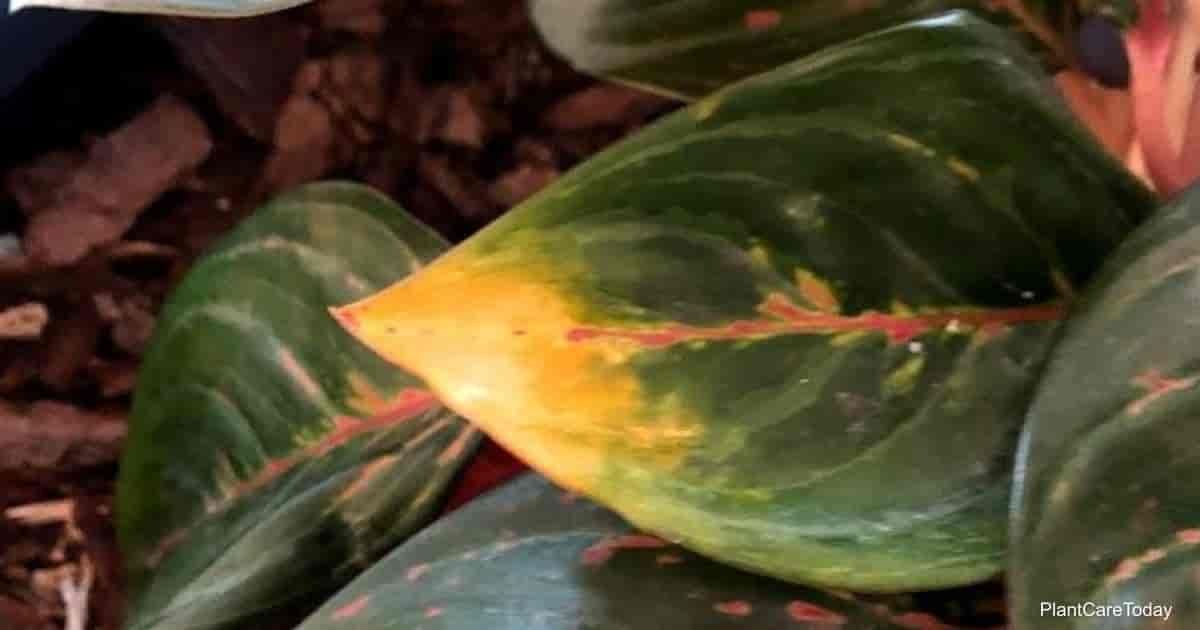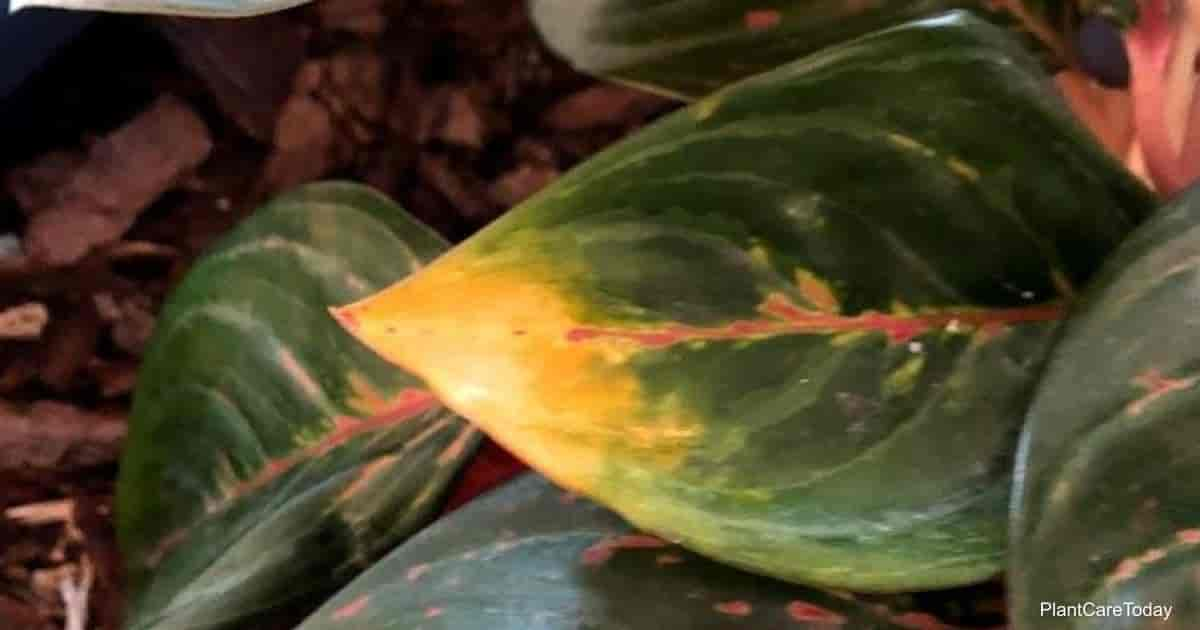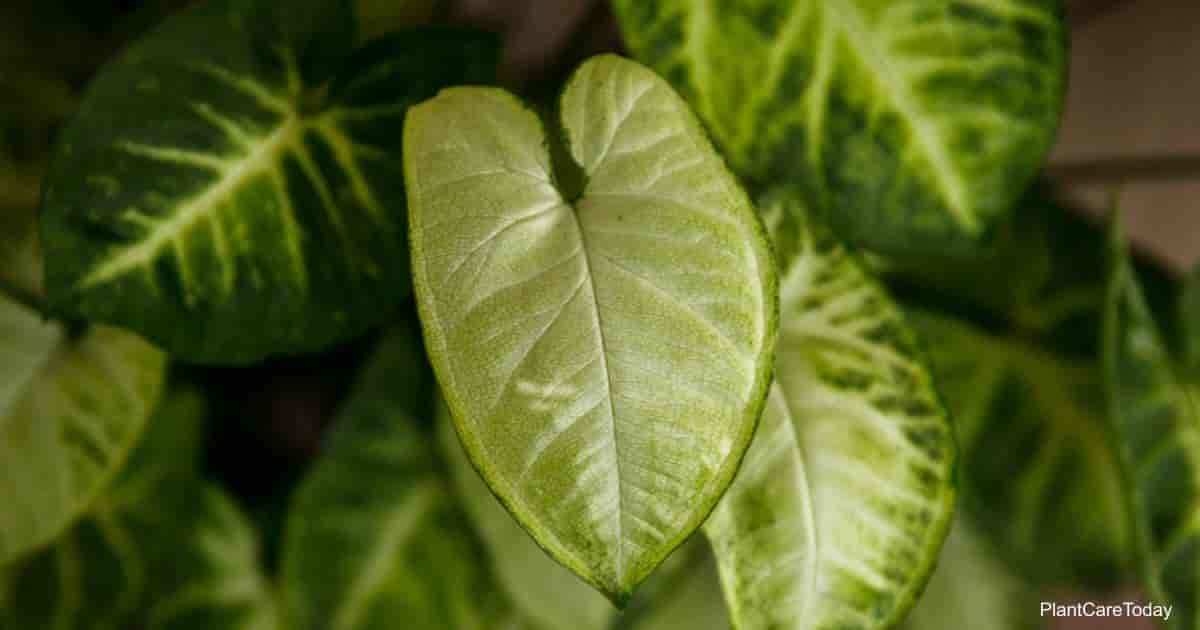A common topic among Aglaonema owners is “My Chinese Evergreen has been one of my happiest plants, but recently some of the bottom leaves have been yellowing.
What’s wrong? Are yellow leaves a sign of overwatering?”
There are many reasons why the leaves of your Chinese Evergreen or Aglaonema plant (ag-lay-oh-NEE-muh) might turn yellow.
The most common reason involves water. Too little water or too much will cause the leaves of the Chinese Evergreen plant to turn yellow.
In addition to these very common reasons, there are several others that involve temperature, light, and nourishment.
In this article, we discuss the reasons why the leaves of a Chinese Evergreen plant might turn yellow, and we provide advice to help you cope with this dilemma.
Common Reasons for Yellowing Leaves in Chinese Evergreen Plants
#1 – Improper Watering
Your plants’ leaves may be yellowing for a wide variety of reasons. One of the most common is improper moisture in the soil. Overwatering (excess water) is usually the culprit.
You should only water your Chinese Evergreen when you find that the top couple of inches of the soil has become dry.
Overall, the soil in the pot should remain slightly moist; however, you should never allow it to become waterlogged.
Furthermore, in the wintertime, let the soil of these indoor plants become quite dry between waterings. The combination of cold temperatures and wet soil is a sure recipe for root rot.
Always use the soak and dry method of watering. To do this, you wait until the soil is fairly dry (not bone dry) and then you pour water through the soil so that it runs out the drainage holes in the bottom of the pot. Never allow the plant to stand in a saucerful of water. Always pour off the excess.
#2 – Lack of Humidity
Very low humidity levels when growing in air conditioning can also cause yellow leaves and turn to brown leaves and then to die. Mist your Chinese Evergreen frequently to improve humidity levels.
#3 – Improper Light Conditions
Inadequate light will also cause the leaves of your plant to turn yellow. Place your Chinese Evergreen in a consistently warm setting where it will receive bright, indirect sunlight for 6 to 8 hours per day. No direct sunlight!
Although the plant can do well in low light areas, it does need a minimum of six hours of bright, indirect sunlight daily for photosynthesis.
#4 – Environmental Extremes
Stress can also cause yellowing leaves. Take care to create a regular watering schedule so that you do not have your plant swinging wildly between very dry and extremely wet soil. Avoid exposing your plant to extremes of temperature.
#5 – Insect Pests
If your plant becomes stressed or weakened by overwatering, under watering, incorrect lighting, and/or low humidity, it will become susceptible to infestation by pests.
Apider mites, mealybugs, scale, and other sap-sucking types of insect pests will literally suck the life right out of your plants and cause the leaves to yellow.
You must examine your plants frequently and keep an eye out for houseplant pests. Deal with them promptly because they reproduce rapidly.
Chinese Evergreen Leaf Yellowing/Chlorosis Q & A
Should I Cut Yellow Leaves Off Chinese Evergreen Plants?
Generally speaking, pruning of this plant is not recommended. New growth always comes from the crown of the plant, so pruning it can actually kill the whole plant.
Even so, if you see dead, yellowed, or rotting leaves, it’s smart to trim them away using a sharp, sterile implement. Diseased leaves attract insect pests and can contribute to the decay and death of your plant.
Can A Yellow Leaf Turn Green Again?
Very often, yellow leaves are an indicator of stress. When this is the case, they will not be able to become green again.
Many things can cause yellowing leaves, including:
- Extreme Temperatures
- Transplant Shock
- Lack of Nutrition
- Insect Pests
- Diseases
More often than not, leaves will not regain green color after turning yellow. In some instances, when the cause of the yellowing is a lack of nutrition, it may be possible to green the leaves up again. In most cases, you are better off removing yellowed leaves.
What Is A Chinese Evergreen Plant Lacking If It Turns Yellow?
If the edges of plant leaves turn bright yellow while the inner part of the leaf stays green, this is an indication of a deficiency of potassium. You’ll see these symptoms on older leaves first.
If you see yellow patches in between the veins of older leaves, this is an indication of magnesium deficiency.
One of the most common causes of yellowing leaves or chlorosis is iron deficiency. Deficiencies of zinc and/or manganese can also cause chlorosis.
Nutrition deficiencies happen because there is an insufficient amount of nutrients in the soil. This may also happen because the soil is too alkaline or has a pH level that is too high.
This state of affairs can make it impossible for your plant to uptake nutrients, no matter how much fertilizer you use.
Additionally, if your plant’s roots are injured or diseased, they will not be able to uptake nutrients.
When lack of nourishment is causing yellowed leaves, repotting with good soil is recommended.
While you have your plant out of the pot, examine its roots and trim away any that seem dead or diseased. Additionally, prune away yellowed leaves to save the plant’s energy as it recovers.
What Causes the Bottom Leaves of Aglaonema Plants To Turn Yellow?
Any of the causes already mentioned could cause yellowing of lower leaves; however, if it’s just one or two leaves, it could just be a matter of age.
Leaves don’t last forever. When they have matured and lived out their life cycle, they turn yellow and fall off.
If your plant is putting out lots of new growth at the top and seems otherwise healthy, this is probably the case. Simply trim these off to save the plant’s energy and maintain its attractive appearance.
Credit : Gary Antosh (https://greenspaces.id/collections/aglaonema)





